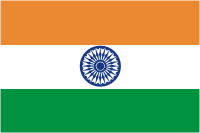Nayanika agreed to record herself playing the veena - a distinctly Indian stringed instrument - so that everyone back in the US could see what it looked and sounded like.
Wednesday, December 19, 2007
Nayanika and the Veena
Nayanika agreed to record herself playing the veena - a distinctly Indian stringed instrument - so that everyone back in the US could see what it looked and sounded like.
Map of India

About the Exchange
"The Fulbright Program, the U.S. government's flagship program in international educational exchange, was proposed to the U.S. Congress
in 1945 by then freshman Senator J. William Fulbright of Arkansas. In the aftermath of World War II, Senator Fulbright viewed the proposed program as a much-needed vehicle for promoting "mutual understanding between the people of the United States and the people of other countries of the world." His vision was approved by Congress and the program signed into law by President Truman in 1946.
Fulbright grants are made to U.S. citizens and nationals of other countries for a variety of educational activities, primarily university lecturing, advanced research, graduate study and teaching in elementary and secondary schools. Since the program’s inception, approximately 279,500 participants—chosen for their academic merit and leadership potential—with the opportunity to exchange ideas and to contribute to finding solutions to shared issues."
http://www.fulbrightexchanges.org.


2 comments:
Sir,
Thank you so much for having posted about me Sir. I was absolutely enthralled!
I also take the opportunity to consider your Cultural exchange blog as a means of conveying my gratefulness to my Veena teacher. For having made me learn the art of playing veena, the whole credit goes to her.
This is a fact that many of the professional musicians in India, very rightly, give a lot of importance to the wordings of the song (in musicology - 'Saahithyam'). Whereas, I somehow have a very strong affinity towards the musical notes and tunes ('Swaram' and 'Raagam') and have a higher regard for the Swaram in my heart.
To my fortune, my Music ma'am Mrs.Subhashini Sastry is a lady who too considers Swaram more important than Saahithyam. She did make sure she also explained to me the essence of the lyrics during each of my veena class, though.
And Sir, I also wanted you to know, that in the field of Indian Classical Music, (just like those of anyother Nation's) there are examinations held to test the extent of one's comprehension of musicology.
Due to the efforts of my teacher, I somehow managed to be a 'Certficate' holder, i.e., an exam preliminary to attaining Diploma. I was meant to appear for Diploma this May. But due to pressures of this year being the last academic year (a turning point in one's career), I forced myself to discontinue it.
But seeing myself on your blog has made me realise, how precious a hobby am I losing! I shall make sure I'd continue it and finish my diploma Sir.
Thank you once again, Sir.
Nayanika =)
Wonderful! References to Indian classical music are made in many ancient religious texts, including epics like the Ramayana and Mahabharata. The Yajnavalkya Smriti mentions in Sanskrit: "veena vadhana tathvangna sruti, jathi, visartha talanjaaprayasena moksha margam niyachathi". Meaning: "The one who is well versed in Veena, one who has the knowledge of Srutis and one who is adept in Tala, attains salvation without doubt."
Post a Comment